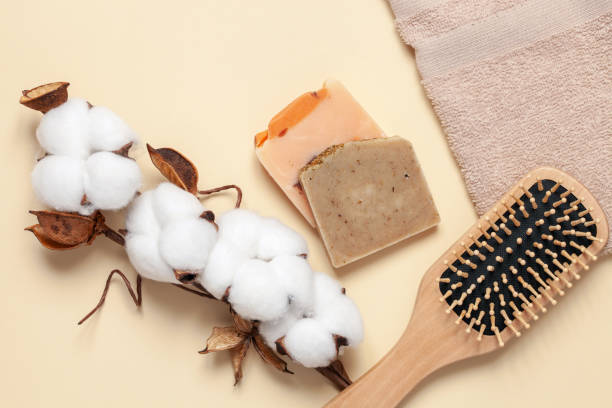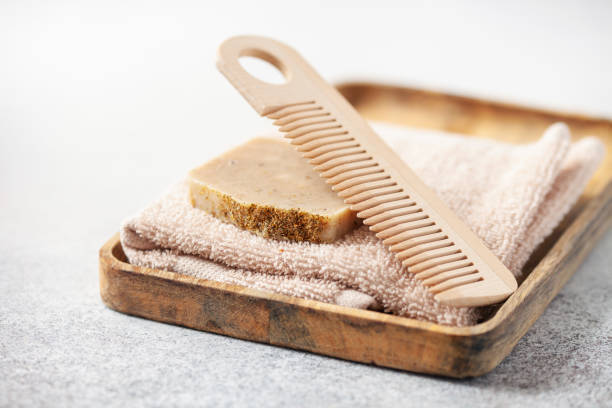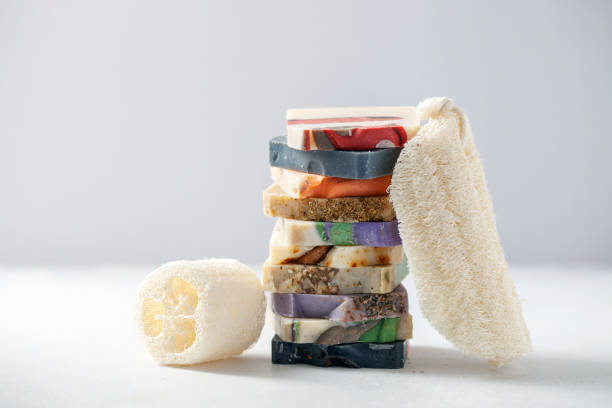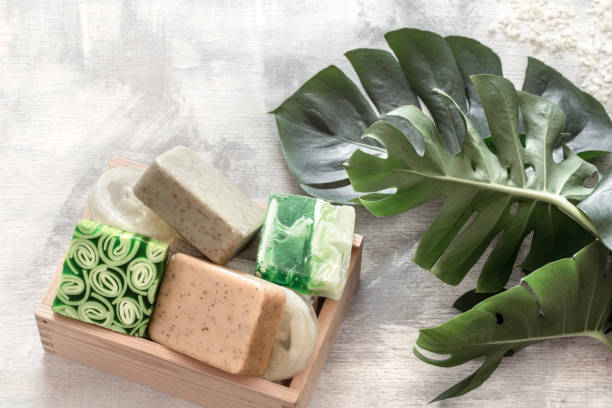Shampoo and conditioner bars became popular as a more environmentally conscious alternative to regular liquid shampoos and conditioners. A conditioner or shampoo bar is a soap product specifically designed for hair cleansing and moisturising. There are different types of such products available, like hair darkening shampoo bars, organic shampoo bars, conditioners and shampoo bars for dry hair. You can either buy shampoo bars online in India, or make your own using a shampoo bar recipe. Read more about conditioner and shampoo bar benefits and disadvantages, their recipes and terms of use!
01The Pros and Cons of Shampoo and Conditioner Bars: The Basics

Shampoo and Conditioner Bars Pros
Eco-friendly Packaging
The first benefit of dry shampoo and conditioner bars is that they need less packaging. This makes them a more sustainable option compared to conventional liquid products in plastic.
Portable and Convenient
Shampoo and conditioner bars are incredibly convenient to use in your beauty routine, as they are compact and can be easily carried around. They are also ideal for travellers, as they are easy to pack in a suitcase or a gym bag.
Long-lasting
Conditioner or shampoo soap bars can last for an extended period of time. Some bars are lasting up to three times longer than a liquid shampoo and conditioner in a bottle. This translates to long-term cost savings.
Shampoo and Conditioner Bars Cons
Adjustment Period
One of the significant disadvantages of shampoo and conditioner bars is that they feel different compared to your regular liquid shampoo and conditioner. Sometimes, you may find that they do not lather as much, which can take some getting used to.
Drying Effect
Some shampoo bars in India can be drying, especially for those with dehydrated or damaged hair. This is because they contain less moisture compared to traditional liquid shampoos and conditioners.
Limited Options
Another disadvantage of shampoo bars is the limited options available compared to conventional liquid shampoo and conditioner. This can make it challenging to find a product that works for a specific hair type or need.
02DIY Bar Shampoo and Conditioner Recipes

To prepare a dry shampoo bar or a natural conditioner bar, stir the listed below ingredients together. Pour the mix into a soap mould or silicone mould. Let the shampoo or conditioner bar sit undisturbed for 24 hours, or until it has hardened completely. Once it's solidified, remove the bar from the mould and let it air-dry for a few days.
1. Soda Hair Shampoo Bar
This recipe requires half cup of grated soap, 1 tablespoon of baking soda, 1 tablespoon of water, and 5-10 drops of essential oil. Mix all in a bowl until well combined.
2. Apple Cider Vinegar Shampoo Bar
Combine half cup of grated soap, 1/4 cup of ACV, 1/4 cup of water, and 10 drops of lavender essential oil in a bowl. This bar is great for removing buildup and promoting healthy hair growth.
3. Coconut Milk Shampoo Bar
Mix half cup of grated soap, 1/4 cup of coconut milk, 1/4 cup of water, and 10 drops of tea tree essential oil. This bar is ideal for those with dry, damaged hair, as the coconut milk helps to hydrate and nourish.
4. Herbal Tea Shampoo Bar
Combine half cup of grated soap, 1/4 cup of herbal tea, 1/4 cup of water, and 10 drops of rosemary essential oil in a bowl. This bar is perfect for those with oily hair, as the herbal tea helps to balance the scalp's natural oils.
5. Honey Shampoo Bar
Mix half cup of grated soap, 1/4 cup of honey, 1/4 cup of water, and 10 drops of lemon essential oil. This bar is ideal for those with dry, brittle hair, because honey helps to hydrate and add shine to your tresses.
How to use a natural shampoo bar

- Wet your hair thoroughly.
- Rub the shampoo bar in your hands to create a foam.
- Apply it to your scalp, gently massaging with your fingers.
- Spread through the roots and mid-length of your hair.
- Rinse your hair thoroughly, making sure all the suds are removed.
- Repeat as needed. It is normal for shampoo bars to produce less suds compared to liquid shampoo, but this does not mean that they are less effective. Over time, many users find that their hair becomes more manageable and soft with regular use of a suitable shampoo bar.
DIY Conditioner Bar Recipes
1. Avocado and Honey Conditioner Bar: mash up a ripe avocado and mix it with a tablespoon of honey. 2. Coconut Oil Conditioner Bar: melt a few tablespoons of coconut oil and mix in a few drops of your favourite essential oil. 3. Banana and Yogurt Conditioner Bar: mash up a ripe banana and mix with a quarter cup of yogurt. 4. Egg and Olive Oil Conditioner Bar: whisk an egg and mix with a tablespoon of olive oil. 5. Aloe Vera and Castor Oil Conditioner Bar: mix a few tablespoons of aloe vera gel and a teaspoon of castor oil.
How to use a conditioner bar

- Wash your hair with shampoo as usual.
- Wet the conditioner bar and rub it between your hands to create a creamy texture.
- Apply the cream to the mid-length and ends of your hair.
- Massage the conditioner into your hair for 2-3 minutes, making sure it is fully coated.
- Rinse your hair thoroughly with cool water to remove all the conditioner.
03FAQs about The Pros and Cons of Shampoo and Conditioner Bars
Q1 Are shampoo and conditioner bars suitable for all hair types?
Not all shampoo and conditioner bars are ideal for all hair types. Girls with curly or dry hair may experience frizz or difficulty in detangling their hair when using a shampoo or conditioner bar. It is important to choose a bar, that is specifically formulated for your hair type or concern, such as a shampoo or conditioner bar for dry hair.
Q2 Can shampoo and conditioner bars be used on both hair and body?
Yes, many shampoo and conditioner bars are multi-functional and can be used on both hair and body for cleansing and moisturising. They are a great option for those who want to simplify their beauty routine.
Q3 Can shampoo and conditioner bars cause build-up in hard water?
Yes, shampoo and conditioner bars can build up in hard water, making it difficult to rinse out and leading to dull and lifeless hair. In this case, we suggest you switching to a different type of hair cleansing product.





